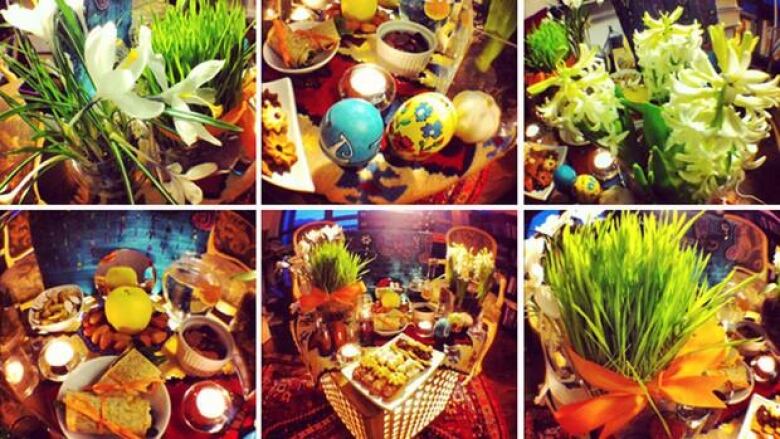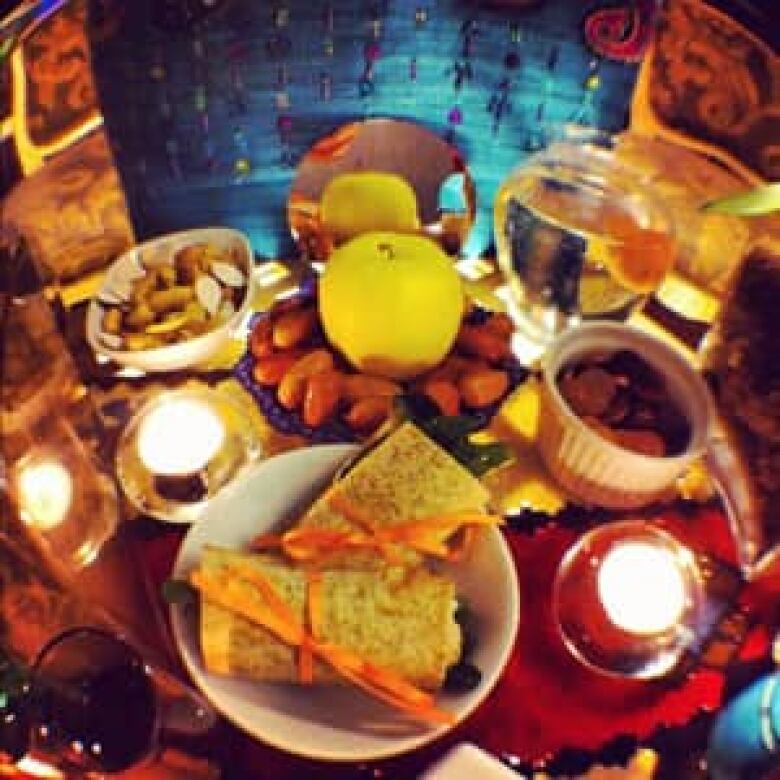Spring equinox signals celebration of Persian new year
Millions of people around the world celebrate Nowroz

March 20 marks not only the beginning of spring but also the start of a new year for the more than 300 million people around the world who celebrate Nowroz, the Persian holiday whose name translates as "new day" in English.
For those who celebrate the ancient tradition ofNowroz, the vernal equinoxsignifies not only the start of a season of bounty but alsoa time of renewed optimism. This year, it will also mark the start of the Persian year 1,393.
The seven 'S's
Nowrozcelebrations must includea table set withhaft seen,or the seven 'S's:
Sabzehwheat , barley, mung bean or lentil sprouts growing in a dish, symbolizing rebirth.
Samanu sweet pudding made from wheat germ, symbolizing affluence.
Senjed dried fruit, symbolizing love.
Sir garlic, symbolizing medicine.
Sib apples, symbolizing beauty and health.
Somaq fruit, symbolizing the colour of the sunrise.
Sekeh coins, symbolizing wealth or prosperity.
Another item isSerkeh(vinegar), symbolizing old-age and patience.
"It's a festival of renewal, and so it is about the optimism of a new year, the optimism of a fresh start, of rebirth. I think thats what it means to a lot of people," says Sima Sahar Zehari, a Toronto-basedjournalist for Shahrvand, North America's largest Farsi-language newspaper.
A major part of theNowroz ritual is the setting of the haft seen table. Haft seen translate as seven 's's in English, and the haft seen table is setwith seven specific items whose namesstart with the letter 's' (see sidebar).
Nowroz (which in English appears in anumber of variations on thisspelling depending on how the word is transliterated from the various Persian dialects) isa festival of great significance whose age-old history extends beyond just Persianculture and is celebrated in many countries of different religions and ethnicities.
"Nowadays, when we talk about Persian culture or Nowroz, in particular, most have a tendency to refer that to a country known as Iran," explains Iman Younesi, who works at the Iranian Cultural Centre in Ottawa. "But the truth is that Nowroz is widely celebrated in that area but also in parts of China, in parts of Africa, parts of Russia, Tajikistan, Uzbekistan, Afghanistan, Lebanon, Yemen, Bahrain, Turkey, Syria and so many more places."
The traditionof celebrating Nowruz dates back 1,500 years to the reign of the mythical Persian King Jamshid.
Since then, the holiday has been embraced by different religions and nationalities, andtraditionsvary from culture to culture. However, the spirit of happiness, giving, family, harmony and friendship are common threads in the various observances of Nowroz.
Iraniansconsider Nowroz their biggest celebration of the year. For Iranians living abroad celebrations may not be as large but are no less important.
"Here in Canada, it's a reminder of what we had back home and all the big Nowruz celebrations there," said Sahand F. Shahrokhi, an Iranian-Canadianengineering student at Toronto'sRyerson University, by email. "It symbolizes the new and fresh start of everything in your life."
Persian familiesin Canadamark the occasion in different ways.

"I have been away from my family for a few years now, so I usually hang out with friends with similar situation," says Mani Mobini, a photographer of Iranian originliving in Toronto, in an email. "We drink wine and eat cheese and pretend like we are doing something special, but it wouldn't be any different than any other day.
"However, if my parents are with me, we'll have a beautiful haft seen set up, and we'll gather around it before the new year. We hug and kiss and wish each other a great year ahead, followed by delicious home-made Persian food (my fav part)."
For Shahrokhi, family and food are also important parts of the holiday.
"The whole family gets together,and we sit around the sofre to wait for the sal tahvil basically, the new year's countdown," he said. "Often, we eat sabzi polo mahi, which is fish and rice. We also make sure to Skype with my grandparents to have them by our side, for the new year's countdown."
Hamid R. Tizhoosh, a professor of engineering at the University of Waterloo who grew up in Iran, associates the holiday with his childhood.
"When I was a little boy, may beseven, eightyears old, my dad took me to a tailor to make me a suit for the very first time," he said. "This was a tradition back then. A week after that, I got my first suit: dark blue withspacious pockets. My mom still has it."












_(720p).jpg)


 OFFICIAL HD MUSIC VIDEO.jpg)
.jpg)



























































































